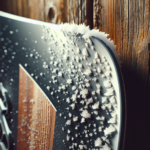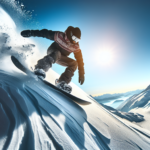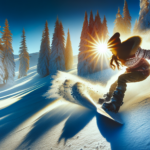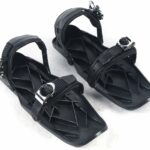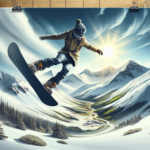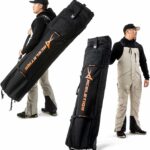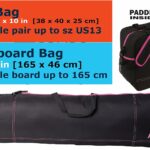Are you a snowboarding enthusiast just wishing for the summer sun to fade away so you can hit those snowy slopes again? We get it, the thought of waiting until next winter to snowboard is a bummer. But what if you could get better at snowboarding during the summer months, enhancing your skills for the upcoming season? That’s exactly what’s in store for you with this guide on how to train for snowboarding in the summer. In this article, we’ll outline some effective strategies to keep your snowboarding skills sharp even when the snow is long gone.
Understanding Snowboarding Basics
Just like any sports, mastering the art of snowboarding requires good understanding of the basic skills and abilities. This sport might seem intimidating at first, but with dedication and practice, you’ll find it exciting and fulfilling. Snowboarding basics involve understanding the physical requirements and learning essential techniques.
Physical requirements for snowboarding
Snowboarding is a demanding physical activity. It requires strong core and leg muscles. Squats, lunges and planks can go a long way in helping you build endurance. On the other hand, cardio fitness is equally vital as typical snowboarding runs can last over a minute, leaving you out of breath. Thus, you need to have a good cardiovascular fitness to keep up with the demands of the sport.
Essential snowboarding techniques
Snowboarding techniques vary from simple to complex. Beginning with proper stance – an improper stance can affect your balance and control. Learning to fall correctly is also essential as it reduces injuries. Edge control helps in controlling your speed while carving turns make your descent more efficient.
Keeping Yourself in Shape
Off-season training is incredibly important for snowboarders. It involves cardiovascular exercises, strength and conditioning workouts, and flexibility and balance training.
Cardiovascular exercises
Cardiovascular exercise is crucial for snowboarders. Engage in high intensity interval training (HIIT) workouts to spike your heart rate and build your cardiovascular stamina. You can also opt for long-distance running, cycling, or swimming.
Strength and conditioning workouts
To optimize your snowboarding performance, strength and conditioning workouts should be included in your fitness regimen. Exercises like squats, lunges, planks, push-ups, and pull-ups can effectively boost your overall strength.
Flexibility and balance training
Training for flexibility and balance can help reduce injuries and enhance your board control.
Simulate Snowboarding
When there’s no snow around, you can always simulate snowboarding to train your body and get in tune with your board skills.
Using indoor snowboarding facilities
Indoor snowboarding facilities offer a real-snow experience and allow you to practice your skills regardless of the weather.
Skateboarding as snowboarding practice
Skateboarding mimics the action of snowboarding, making it a handy tool for off-season training. It improves your balance, control, and overall boarding technique.
Using balance boards
Balance boards, also known as wobble boards, are a brilliant way to increase your balance and strengthen your core.
Using Snowboarding-Specific Equipment
Training with snowboarding-specific equipment can help you become comfortable with your gear.
Training with snowboard boots
Try walking around in your snowboard boots at home. It may feel odd, but it helps you adjust to the boots’ heaviness, which is essential for snowboarding.
Practicing with a simulation board
Simulation boards allow you have a feel of the real boarding experience right at home, helping to improve your balance and strength.
Developing Snowboarding Skills
Developing your snowboarding skills is of utmost importance. It involves improving your stance, mastering turning and carving, and gradually learning jumps and tricks.
Improving your stance
As with any sport, having a good stance is crucial in snowboarding. Regular practice and various balance exercises can help you improve your stance on the board.
Mastering turning and carving
Turns and carves are basic snowboarding moves that every snowboarder should master. Perfect these skills by practicing with a real or simulated board.
Learning jumps and tricks
After you have mastered the basics, you can gradually learn jumps and tricks. Start with simple jumps before attempting to learn complex tricks.
Mental Training
Apart from physical muscles, your mental muscles also need training. Visualization techniques and focus exercises can improve your concentration and boost your performance.
Visualization techniques
Visualization helps in creating a mental image of the complex moves you want to execute, effectively preparing your mind and body to perform them.
Meditation and focus exercises
Meditation helps to increase your focus. Regular practice could improve your concentration on the slopes.
Understanding the Terrain and Weather
It’s crucial to understand the terrain and weather before setting off to snowboard. This includes analyzing snow conditions and adapting to different terrain types.
Analyzing snow conditions
Different snow conditions affect your boarding experience differently. Training in different snow-like conditions can make you a versatile snowboarder.
Evaluating and adapting to different terrain types
Adapting to different terrains is a must-have skill for every snowboarder. Whether you are riding on groomed runs, in backcountry, or on a superpipe, it’s essential to practice in a variety of terrains.
Diet and Nutrition
A good diet and proper hydration drastically improve your boarding performance.
Building a balanced diet plan
Your diet should include proteins for muscle recovery, carbohydrates for energy, and fats for overall body health.
Importance of hydration
Drinking plenty of water is necessary to stay hydrated on the slopes.
Supplements for snowboarding
Certain supplements like Vitamin D, calcium and lean protein can help in maintaining your energy levels and muscle health.
Recovery and Rest
Rest and recovery are instrumental in keeping you fit and ready for the next session.
Importance of sleep
Getting a good night’s sleep helps in muscle recovery and recharges your energy for the next day.
Techniques for muscle recovery
Post-snowboarding, engage in techniques like stretching, yoga and foam rolling. These can help alleviate muscle tension and improve flexibility.
Knowing Your Gear
Understanding and maintaining your gear is crucial for a safe and enjoyable ride session.
Choosing the right snowboard
Choosing the right board comes down to your personal preference, riding style and the terrain you’ll be riding on.
Understanding snowboarding gear and clothing
Your gear and clothing play a significant role in protecting you from the harsh cold. It’s important to invest in gear that’s comfortable, protective, and suitable for the weather conditions.
Maintaining your equipment
Proper care and maintenance can significantly prolong the life of your equipment. Regularly check for any damage and take actions as necessary.
Snowboarding training doesn’t stop in winter. Incorporating these tips in your summer training will surely help you stay in shape and be ready when the snow finally falls.
- What Snowboard Bindings Should I Get? - January 23, 2024
- What Size Screws For Snowboard Bindings? - January 23, 2024
- How To Snowmobile On Water? - January 23, 2024

